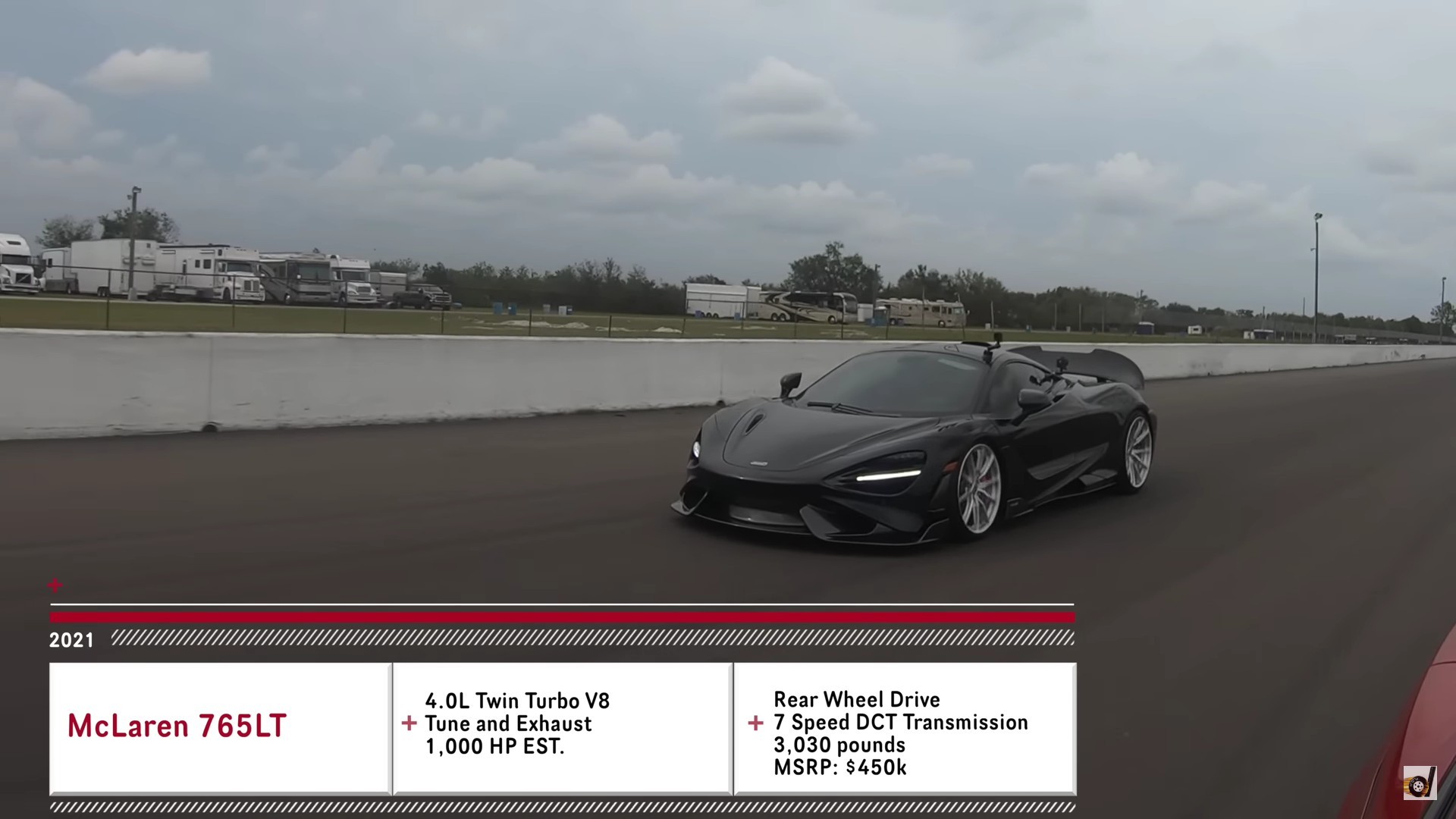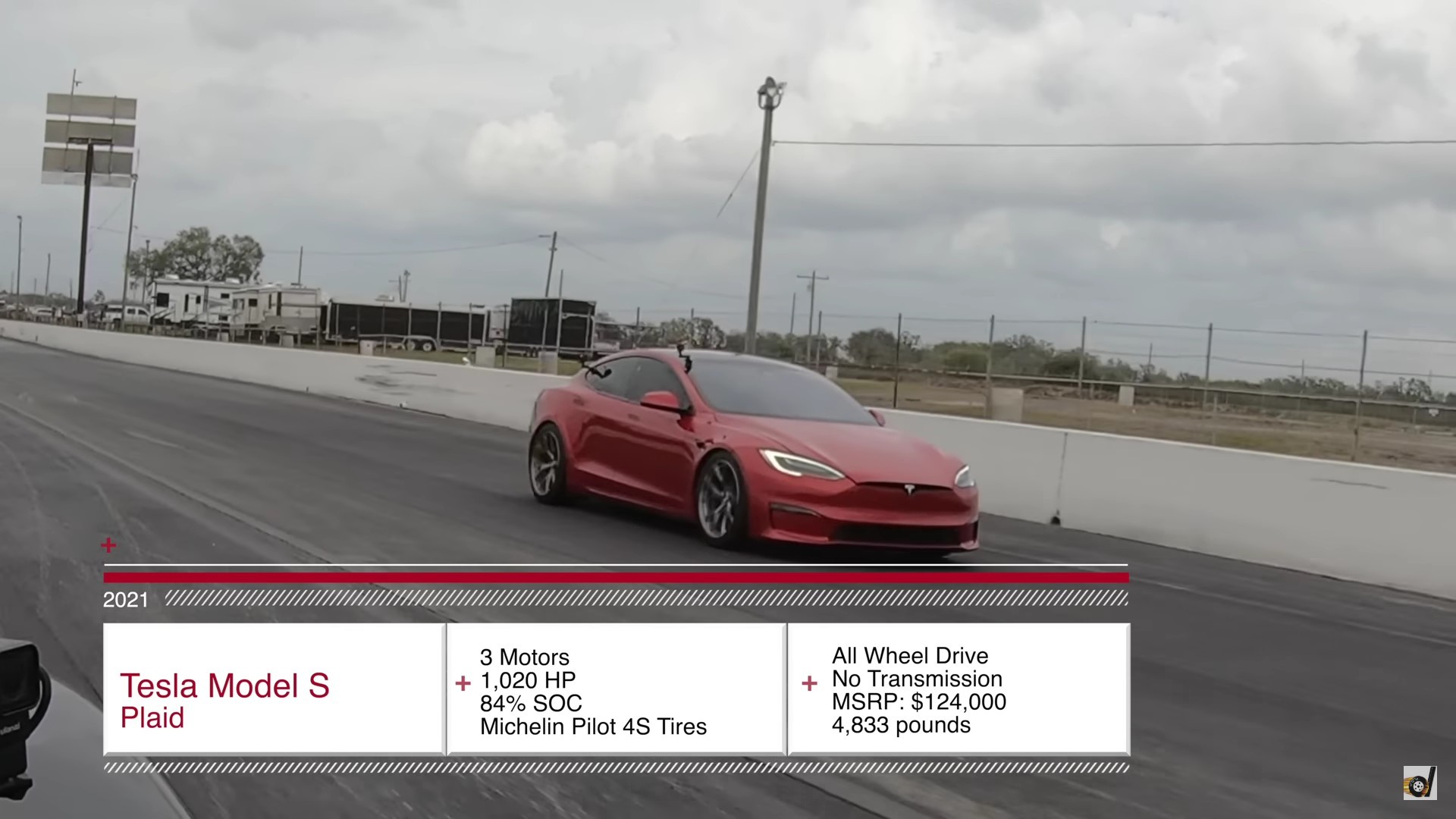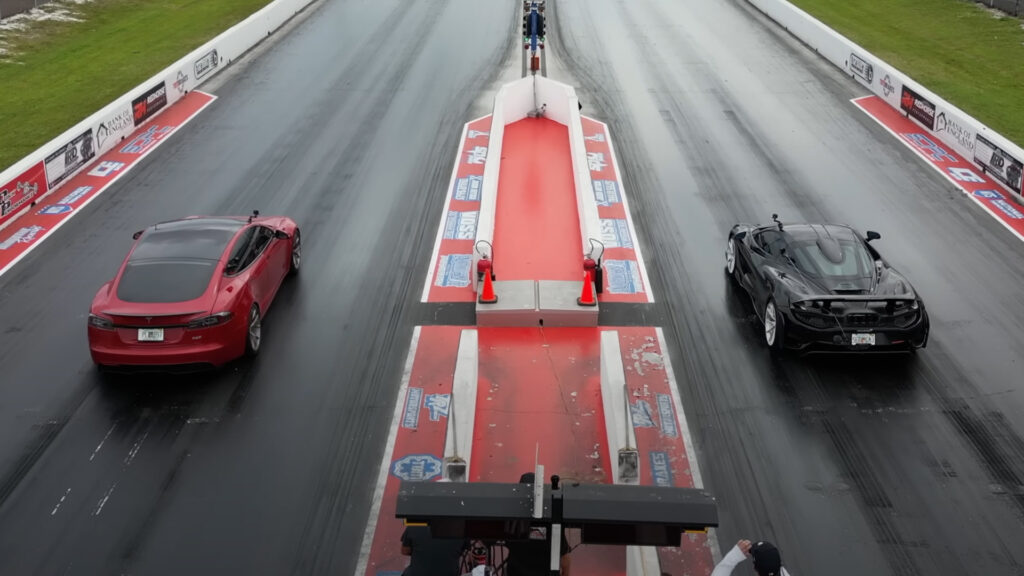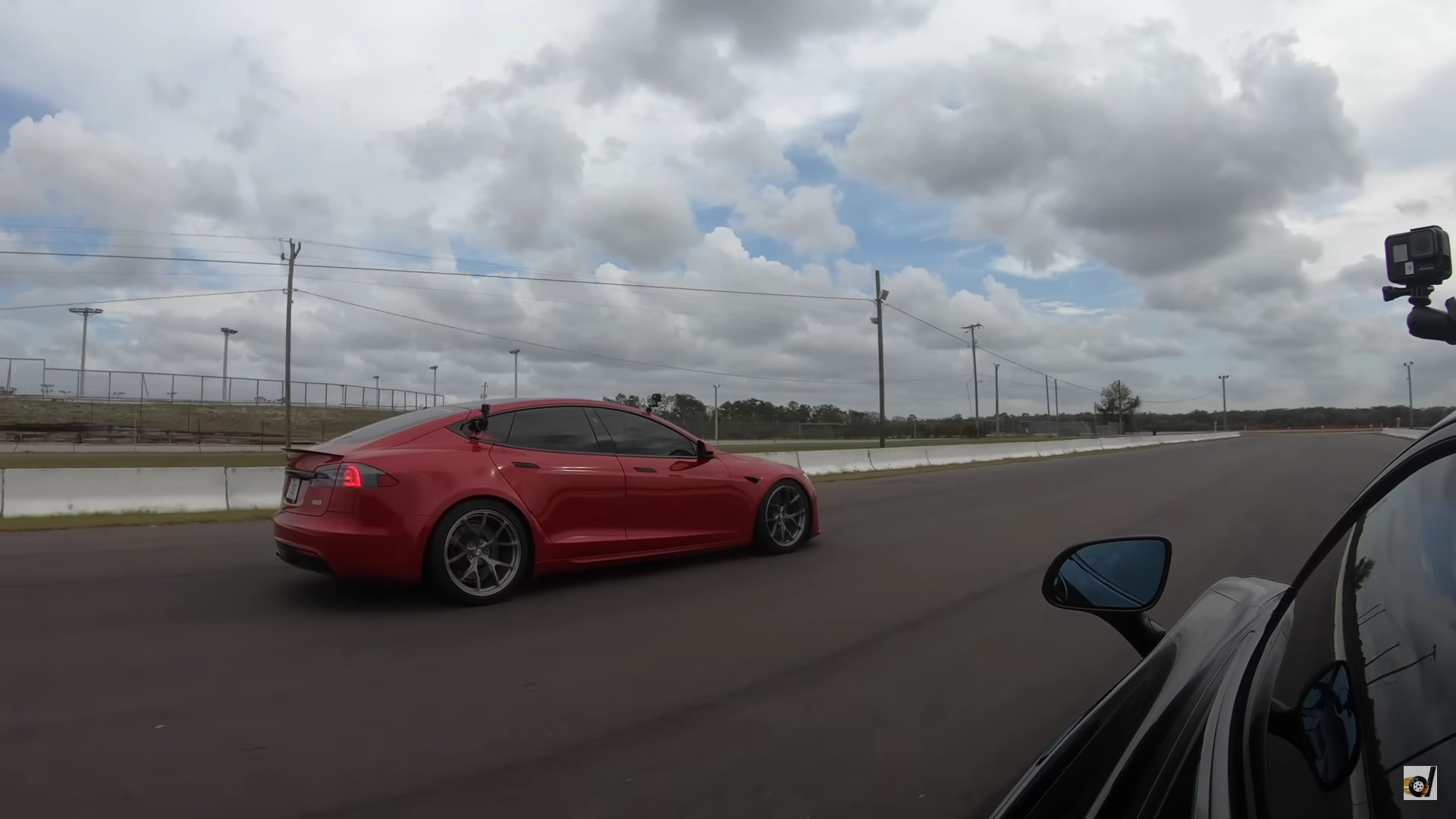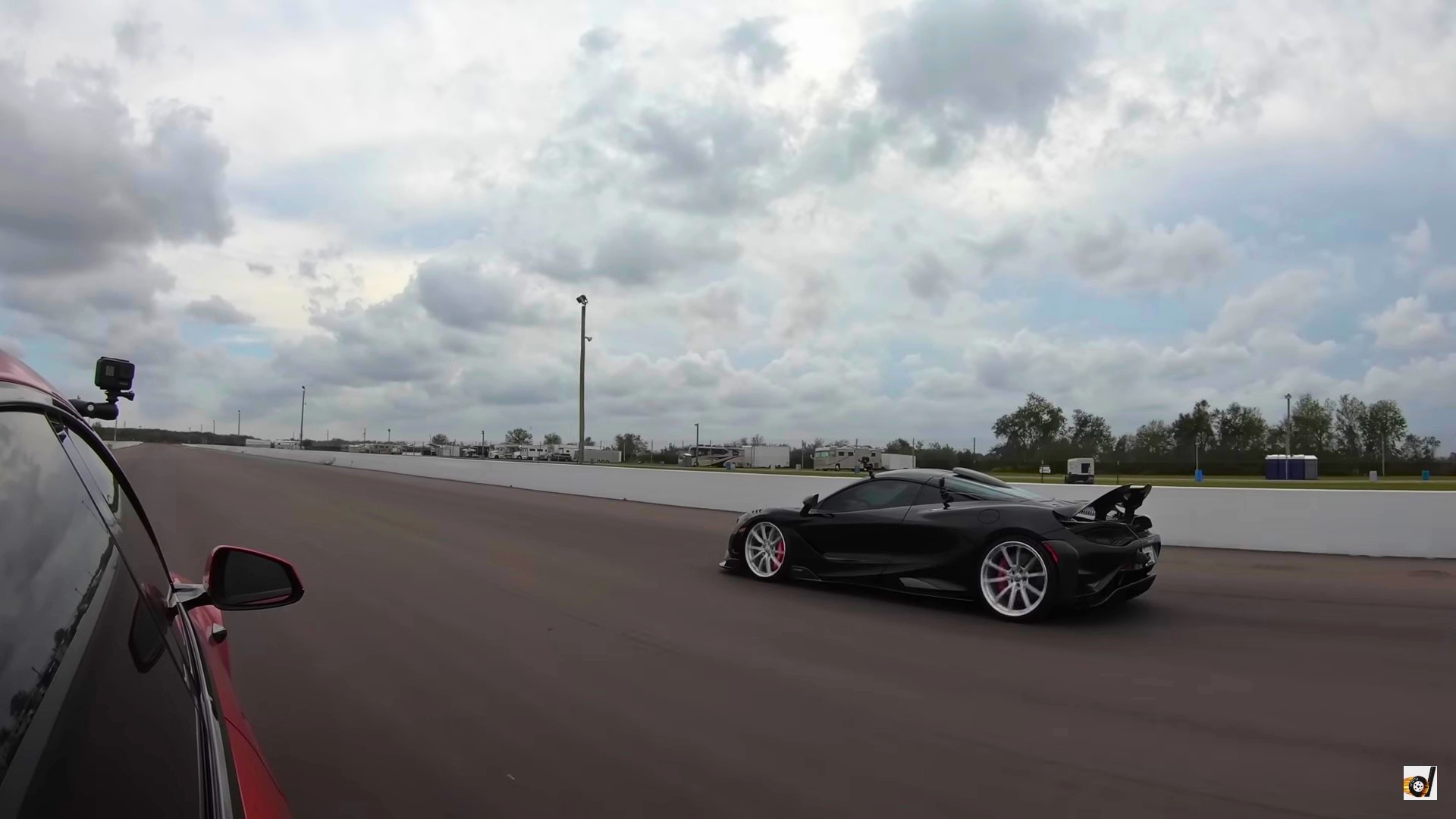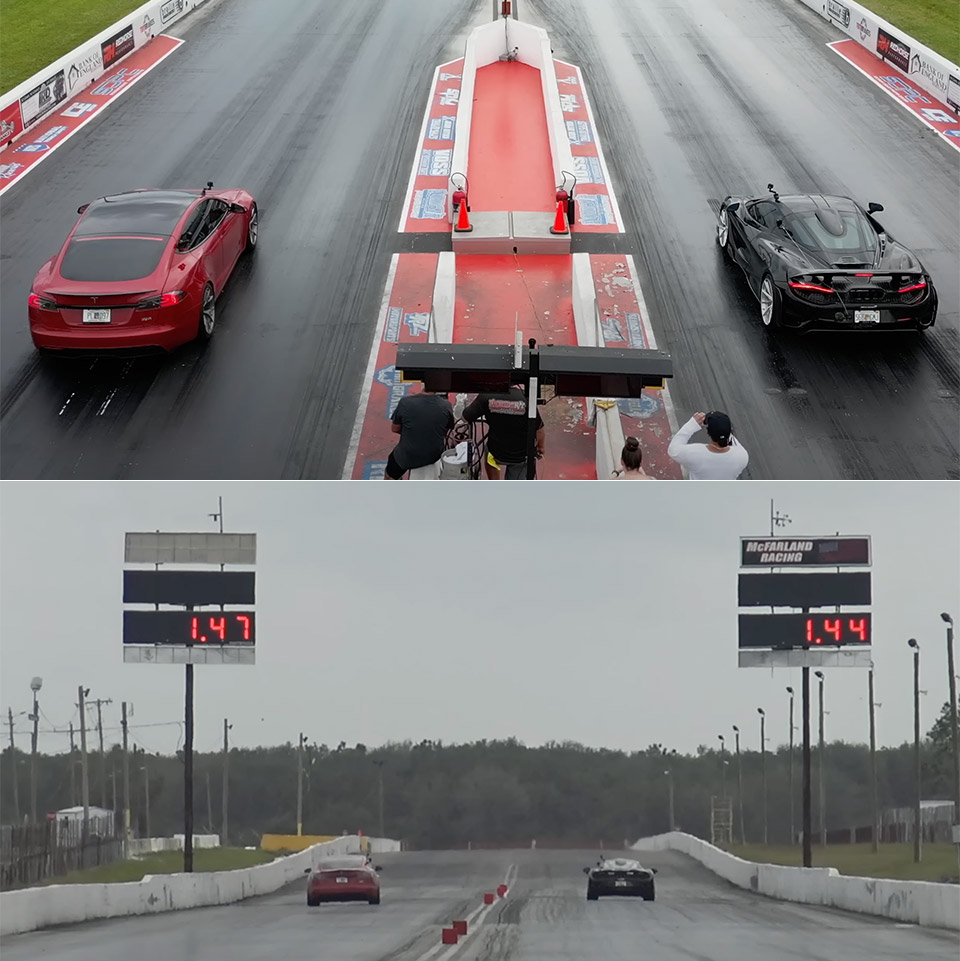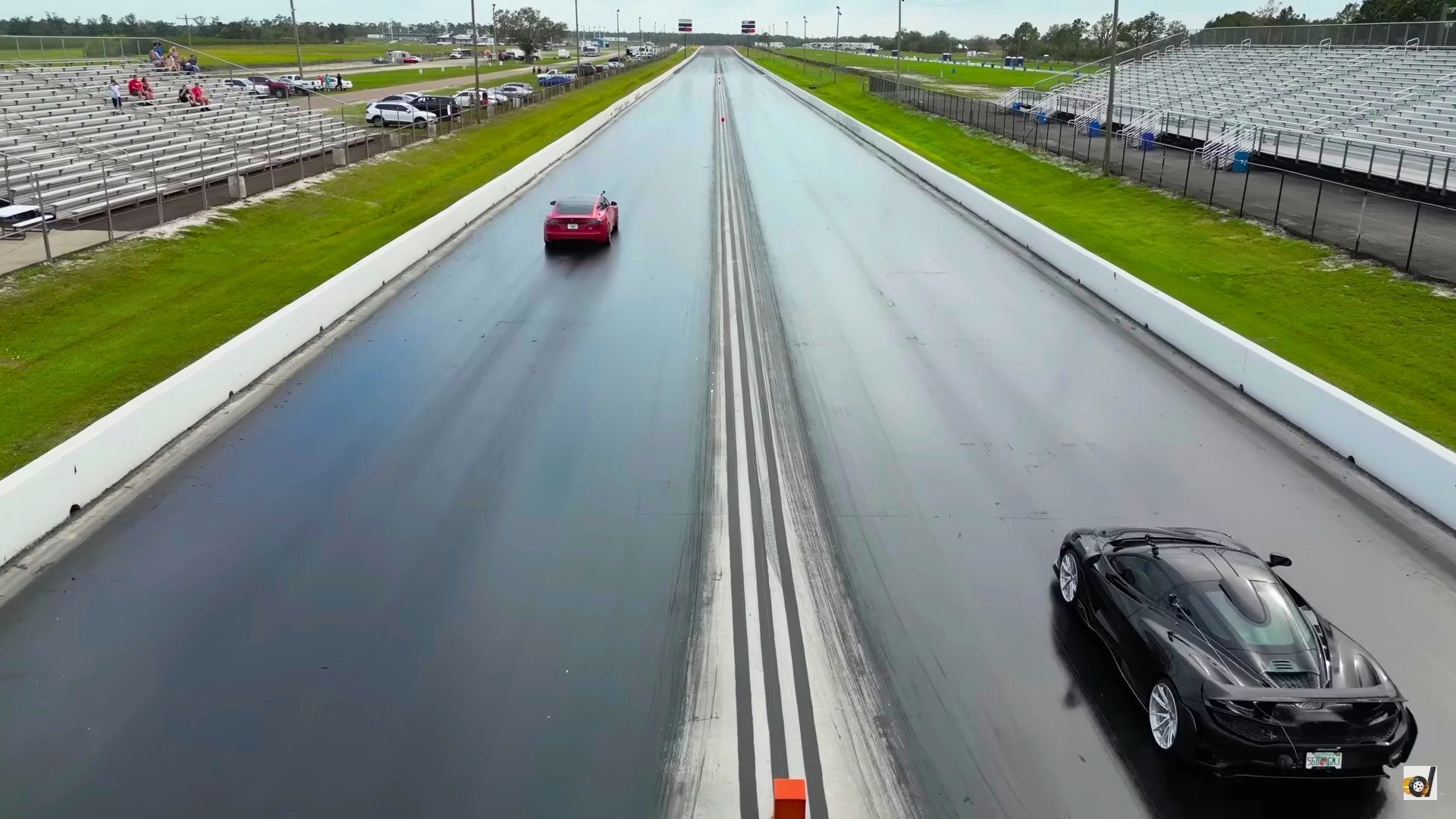Roar-legal supercars have finally figured out the recipe for beating a Tesla at the dragstrip. It’s so bluntly obvious and dramatically simple that it’s a wonder it hasn’t been discovered earlier. You only need half a million dollars and some performance tuning, and you’re good to go. Oh, and one more minor detail: an obscenely fast car to begin with.
That’s what worked for a McLaren 765LT, in any case, so maybe – just maybe – this recipe isn’t valid for all supercars. Still, lessons could be drawn from this experiment: to put more power in horsepower, just feed the horse with cubic dollars.
First, invest $450,000 in a state-of-the-art British supercar, upgrade the performance, and hope for the best at the dragstrip when the other lane belongs to a Tesla S Plaid. Notoriously fast and despicably cheap –compared to the pompous supercars, it slays like a maniacal serial winner! – the Plaid is annoyingly omnipresent on the top spot at the quarter-mile brawl.
That doesn’t automatically make it invincible – no, it just means the runner-up can drive home with the shame of losing to a sedan with enough room to fit two child seats in the rear. Occasionally, a Plaid might lose a 440-yard contest (in rare instances), and it takes some heavy artillery to pull that trick off the hat.
But with a “money-no-object” type of approach, operation “Outrun the Tesla” has a winning chance, as the following video stands as testimony. Courtesy of Drag Times’ host Brooks Weisblat, one such event has been caught on camera at the Bradenton Motorsports Park in Florida.
On the left lane: the 20,000-mile/32,000 kilometers Tesla S Plaid with 1,020 hp/1034 PS, a trio of electric motors, no transmission, and 4,833 lbs./2.189 kg. (Are you not annoyed that, for a thing that has no mass, electricity takes a heavy toll on a car’s weight?)
On the right lane: a masterpiece of internal combustion, a splendor of aerodynamics, a marvel of mechanical engineering, a half-a-million-dollar two-seater explicitly built for speed. The McLaren 765LT supercar, with a 4.0-liter V8, two turbochargers, and a seven-speed dual-clutch gearbox. After the engine and exhaust tuning, the 3,030 lbs./1,373 kg bullet puts out an estimated 1,000 hp (1,014 PS).
It doesn’t take quantic computers to figure out that the British featherweight is the obvious bookie’s favorite – on paper. The power-to-weight ratio is devastatingly against the S Plaid. Also, the Tesla sedan is at 84% state of charge to make things even more interesting. And the 20-mph/32-kph headwind is another factor to be added to the equation.
Solving that mathematical conundrum takes less than 10 seconds – or, for arithmetic accuracy, 9.384 seconds. That’s the elapsed time between start and finish for the S Plaid, who put a trailer between its taillights and the front bumper of the 765LT.
Somehow, the posh McLaren’s launch mode was outsmarted by the start lights – “they burned the tree down” until the supercar just aborted launch mode and rolled off the line in Normal. The instant torque delivery of the Tesla did its job, and the rest is irrelevant.
The 765LT got its payback in round two, with a perfect start and impeccable sprint, putting the fast two-seater across the line after 9.2 seconds at 149.38 mph trap speed (240.352 kph). The difference at the end of the 1,320-foot-long dash leaves no margin for debate. The race fuel-blazing V8 clearly smoked the lightning bolt-eating family car.
The decider isn’t the combustion Holy Grail turntable that piston addicts have been expecting for the past 15 years since Tesla first emerged. The S Plaid took the decider with a 9.4 -second run (and the almost unhuman-like reaction time of 0.188 seconds). The electric car managed very consistent performances in all three races, with top speeds between 146.30 mph and 146.69 mph – 235.39 kph and 236.02 kph.
Video: HOW TO BEAT A PLAID * 1,000 HP McLaren 765LT vs Tesla Model S Plaid DRAG RACE
Source: autoevolution.com




